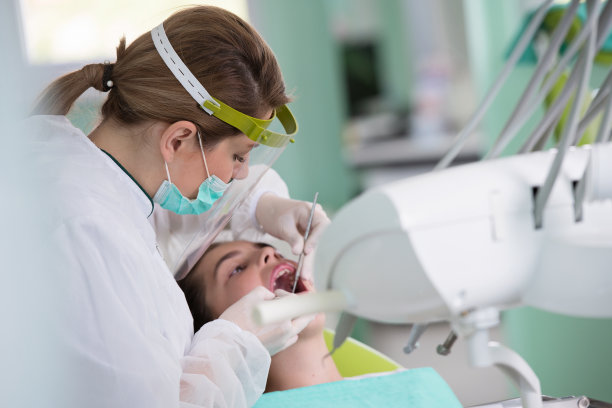Understanding the Procedure and Aftercare for Extracting a Tooth to Ensure Optimal Recovery and Oral Health
Summary: Extracting a tooth can be a critical procedure, often necessary to maintain optimal oral health. This article explores the intricate details of tooth extraction, beginning with an understanding of the procedure itself, including what to expect during the surgery. We then discuss the important aftercare steps needed for a successful recovery, identifying best practices to alleviate discomfort and promote healing. We also address the potential risks associated with tooth extraction and how to mitigate them for an optimal recovery. Finally, we highlight the significance of follow-up care with dental professionals to ensure ongoing oral health. By the end of this article, readers will possess a comprehensive grasp of tooth extraction and aftercare, empowering them for effective management of their dental health.
1. Overview of Tooth Extraction Procedure

The dental extraction procedure begins with a thorough examination of the patient’s oral health. Dentists usually conduct X-rays to understand the tooths position and its root structure. This information is essential for determining whether a simple extraction or a surgical procedure is needed. A simple extraction is performed when the tooth is visible in the mouth, while surgical extraction is used for teeth that are not easily accessible.
Once a treatment plan is established, local anesthesia is administered to numb the area around the tooth. This ensures that the patient feels minimal discomfort during the extraction. In some cases, sedation options may be offered for anxious patients or more complex extractions, helping to alleviate any feelings of anxiety associated with the procedure.
During the extraction, the dentist will gently rock the tooth back and forth to loosen it from the bone and connective tissue. For surgical extractions, incisions may be necessary for a clear view of the tooth. After the extraction, the dentist will place gauze over the site to control bleeding and might provide instructions on how to care for the area.
2. Important Aftercare to Promote Healing
Post-extraction aftercare is vital for a smooth recovery. Initially, patients should keep gauze over the extraction site for at least 30 minutes to allow a blood clot to form. It is crucial to avoid disrupting this clot as it protects the wound and initiates the healing process.
Patients are advised to manage pain and swelling using an ice pack on the cheek in the first 24 hours. Over-the-counter pain relievers can also be taken as prescribed by the dentist to alleviate discomfort. Its important to avoid hot drinks and food immediately after the extraction, as this could dissolve the blood clot and delay healing.
Maintaining oral hygiene is essential during recovery, although care should be taken to avoid vigorous brushing around the extraction site. Patients should gently rinse with saltwater after the first day to promote healing. A soft diet, including yogurt and mashed potatoes, can aid recovery without placing too much strain on the extraction site.
3. Risks and Complications to Watch For
While tooth extractions are generally safe procedures, some risks are associated with them. Possible complications include prolonged bleeding, infection at the extraction site, or damage to adjacent teeth. Patients should be aware of signs of infection, such as increased pain, swelling, or pus discharge.
Another common issue is dry socket, which can occur when the blood clot does not form correctly. This condition can be extremely painful and delays healing. Symptoms may include severe pain a few days after extraction, requiring immediate consultation with a dentist.
To minimize these risks, following all pre- and post-operative instructions is crucial. Patients should disclose all medications they are taking to their dentist, as this helps mitigate interactions that could affect healing.
4. Importance of Follow-Up Dental Care
Proper follow-up care is essential for monitoring the patient’s recovery. A follow-up appointment usually occurs within one week of the extraction to assess healing and address any complications. During this visit, dentists can evaluate the extraction site and ensure that no infections or additional issues have arisen.
Additionally, follow-up visits allow dentists to provide further guidance on oral care and maintenance post-extraction. Patients can discuss any concerns or lingering pain they experience, leading to a tailored care approach.
Ultimately, continuous communication with dental professionals is key to preventing future dental issues. Regular check-ups contribute to overall oral health, providing necessary preventative care and ensuring any subsequent treatments are performed promptly.
Summary:
Understanding the extraction procedure and following appropriate aftercare are fundamental for ensuring optimal recovery and maintaining oral health. By being informed about the process, aftercare, potential risks, and the significance of follow-up care, patients can enhance their recovery experience. Proper attention to these elements fosters better oral hygiene and health long-term.
This article is compiled by Vickong Dental and the content is for reference only.



